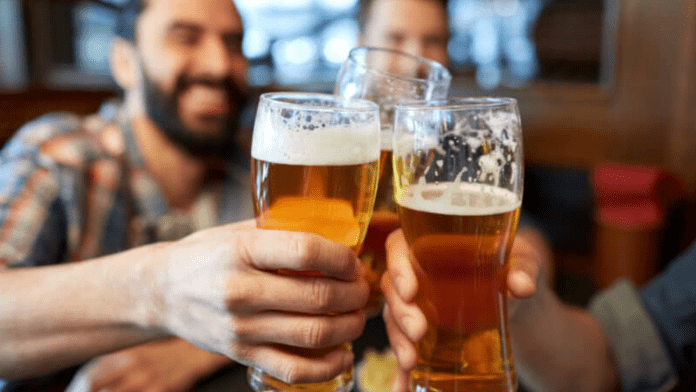According to sources in the Delhi liquor industry, the volume of beer consumption this summer was smaller compared to the previous year.
They highlighted a substantial decline and negative growth of approximately 38% from April 1 to September 30, 2023, in contrast to the corresponding period from the prior year. In the initial six months of the 2022-23 financial year, residents of Delhi consumed nearly 70 million liters of beer, yet during the April to September period in the current fiscal year, this consumption reduced to only 43 million liters.
Larger states like West Bengal and Karnataka recorded double-digit growth, while Delhi’s neighboring states, Uttar Pradesh and Haryana, experienced a slight decrease in summer sales.
Industry insiders ascribed the adverse growth to “supply-related challenges” and the unavailability of specific brands. The Delhi government’s excise department pointed out that comparing the sales figures to those of 2022, a year when liquor discounts were prevalent, was an unfair assessment.
In Delhi and other northern Indian states, the beer sales typically begin to rise in March and reach their peak during June when the temperature consistently climbs to 40-42 degrees centigrade. As the festival season kicks in during September and October, there is a transition from beer to stronger spirits.
From April to July 2023, beer sales declined by 42-52 percent, which reduced to 22 percent in August. However, in September, it rebounded with an impressive 84 percent growth.
In 2022, the liquor industry in the capital witnessed significant upheaval in September when the Delhi government opted to abandon the new excise policy of 2021-22 halfway through and revert to the previous system.
AB InBev, a prominent beer manufacturer, acknowledged that the sales for September this year showed positive results, primarily due to a low base in the previous year. Nevertheless, it noted that the beer industry throughout the country was experiencing high single-digit growth, except in Delhi.
“Availability of premium brands across off-trade channels or shops remains a challenge in Delhi, making consumers go to nearby urban centres such as Gurgaon and Noida. This is totally divergent to the wide availability across on-trade channels in hotels, restaurants, bars and clubs in the city,” said AB InBev’s India spokesperson.
Presently, the city boasts a network of approximately 630 government-owned retail shops, along with more than 900 hotels, clubs, and restaurants that offer liquor services.
According to industry insiders, there are several factors contributing to the sluggish sales, including limited variety, brand prioritization, the absence of chilled beer in shops during the peak season, smaller store capacities resulting in lower stock, and companies redirecting their products to states offering more favorable profit margins.
In the height of summer, beer accounts for more than one-third of the overall alcohol sales.
Vinod Giri, director-general of the Confederation of Indian Alcoholic Beverage Companies, said, “Beer consumption is driven by availability of chilled bottles as most Indians don’t stock beer at home. Since many shops in Delhi had no chillers this summer, it affected availability of cold beer and hence purchase, especially impulse and unplanned ones,” Giri said.
“Supply of some popular beer brands was far from adequate, which also affected overall sales. Frequent policy changes made companies wary of stocking up in Delhi,” he said.





